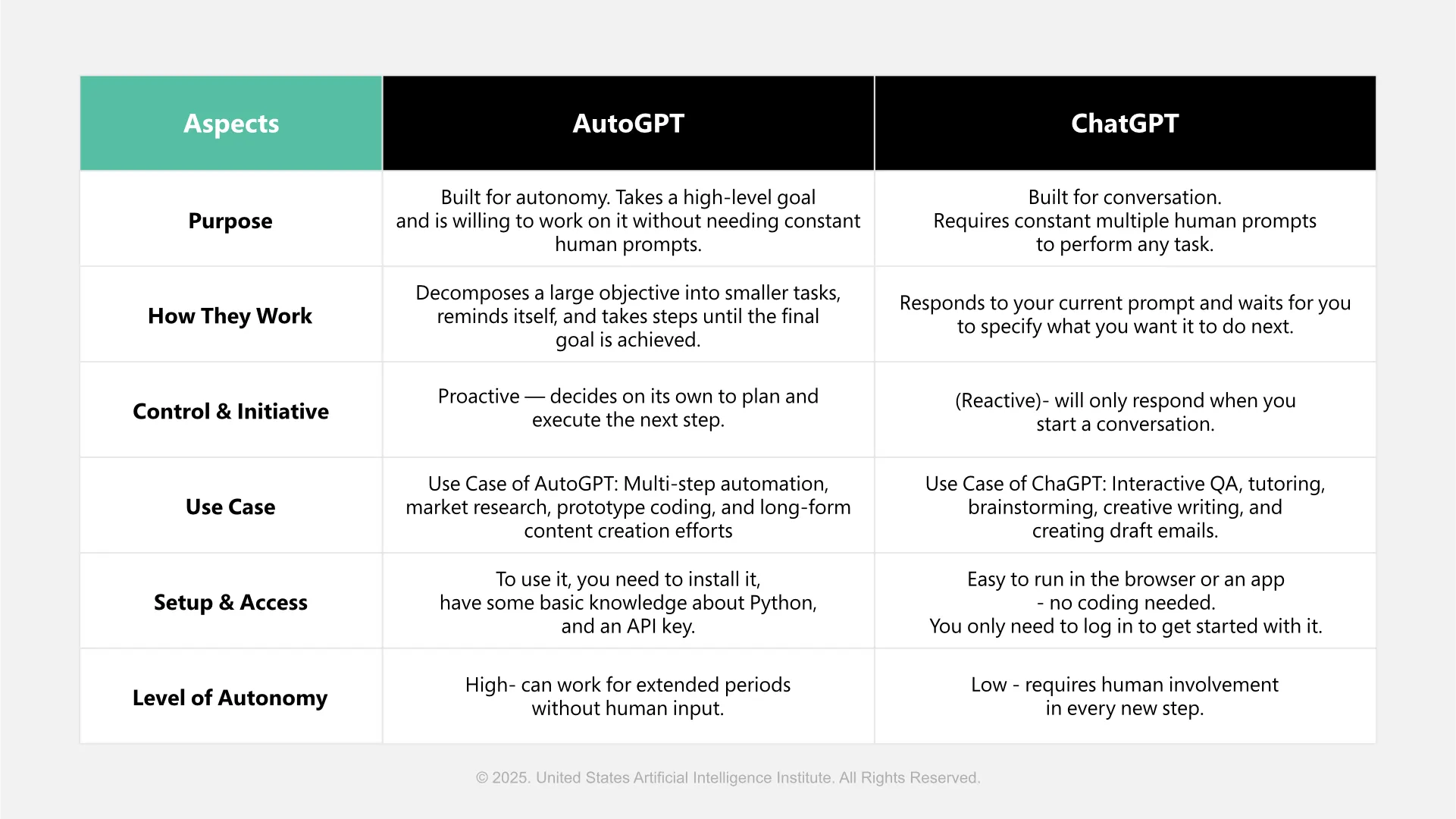
Imagine you have an AI agent that not only answers your questions but also thinks forward, splitting big goals into small sub goals, and accomplishes those goals without any human intervention.
Interesting, right?
Well, yes, with AutoGPT, you don’t need to keep on repeating and modifying the prompt to make AI do the tasks for you. What was once merely a business experiment, businesses are now realizing AutoGPT as a time, cost-saving, and human effort-saving AI tool.
Are you curious to know what AutoGPT is and how it works? So, let’s get started with it.
What is AutoGPT?
AutoGPT is an open-source AI agent, based on the new GPT-4 language model, that doesn't just respond to your prompts — it executes goals for you. Provide a goal, and it breaks the main goal into sub-goals and figures out how to accomplish them on its own without any human intervention.
Did you know, the GitHub activity shows that “repositories leveraging the agentic AI frameworks such as AutoGPT, BabyAGI, OpenDevin, and CrewAI surged by 920% from early 2023 to mid-2025”.
Now, let’s explore the key features of AutoGPT.
Key Features of AutoGPT
AutoGPT is designed to support intelligent automation at scale, facilitate seamless integration, and ensure reliable performance for virtually any AI-driven task. Here are its core features:
1. Seamless Integration with Low‑Code Workflows
Design complex workflows in a few easy steps without much coding, connecting your tools and data sources.
2. Autonomous Operation with Always‑On Agents
Keep AI agents running in the cloud all the time, and have them trigger certain acts when they identify predefined states.
3. Smart Automation for Maximum Efficiency
Save time and focus on high‑value stuff. Automate repetitive, multi‑step processes
4. Consistent, Reliable Performance
Experience stable, consistent completion that ensures zero proactive maintenance in the life of any long‑running process.
How AutoGPT Works?
AutoGPT is an advanced AI framework that converts user-initiated commands at a high level into actionable results by following its workflow. Let’s see how it works:
Workflow Stages of AutoGPT:
Applications of AutoGPT
AutoGPT is already finding applicability across various settings, from startups to enterprise AI projects. Common AutoGPT use cases include:
Some domain-specific versions are already available:
Difference Between AutoGPT and ChatGPT
Here are the core differences between AutoGPT and ChatGPT given below:

Impact on the Future of AI
AutoGPT isn't just another productivity tool -- it's a component in a broader evolution of AI toward autonomous agents. What may be affected by this change:
Benefits and Limitations of AutoGPT
Check out the benefits and limitations of AutoGPT. As you understand their pros and cons, you will be able to understand them in more in-depth.
Benefits of AutoGPT
Limitations of AutoGPT
The takeaway? While AutoGPT is incredibly powerful, it still requires oversight to overcome its limitations.
Wrap Up
However, AutoGPT is one of the more interesting LLM applications as it makes AI into a doer, not just a talker. It is changing the way we do research, plan, make content, and even how we code. Although it is not perfect, it still does have substantial potential to help businesses in their workflows.
So, if you are looking to build an AI that will not just answer your questions but do the work for you, then AutoGPT can be a huge asset. As we are well aware of technology like AI, which promises a lot, remember this: In the age of autonomous AI, smart logistics has finally entered the top tier of human intelligence.
Follow us: